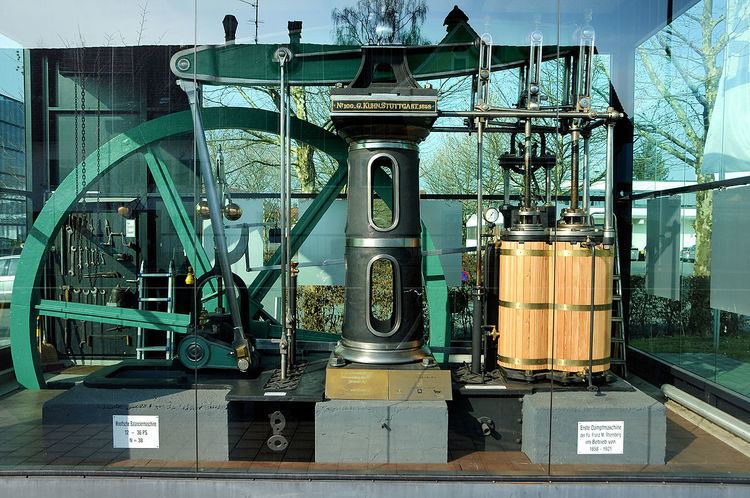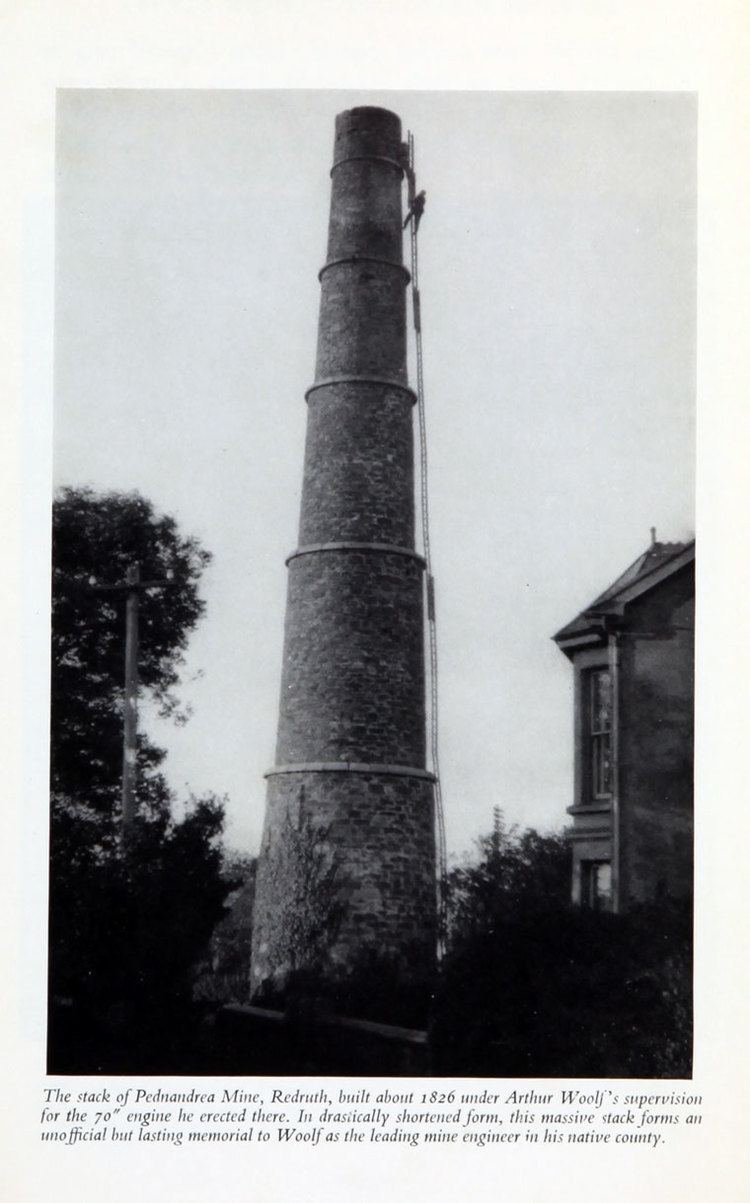Nationality British Role Engineer | Name Arthur Woolf Parent(s) Arthur Woolf | |
 | ||
Spouse(s) wife no 1Emblin Vincent Died October 26, 1837, Guernsey | ||
Engineering discipline Mechanical Engineering | ||
Kicking a castle
Arthur Woolf (1766, Camborne, Cornwall – 16 October 1837, Guernsey) was a Cornish engineer, most famous for inventing a high-pressure compound steam engine. As such he made an outstanding contribution to the development and perfection of the Cornish engine.
Contents

Woolf left Cornwall in 1785 to work for Joseph Bramah's engineering works in London. He worked there and at other firms as an engineer and engine builder until 1811, when he returned to Cornwall. Michael Loam, inventor of the man engine, was trained by him.
When he returned to Cornwall, beam engine designs were crude, shackled by outdated Watt patents and poor engineering. He learned from Bramah that to move forward meant adopting much improved engineering techniques, for it was Bramah who invented quality control. Woolf was chief engineer to Harvey & Co of Hayle, a leading engineering and foundry works. They eventually swallowed up the rival Copperhouse Foundry run by Sandys, Carne and Vivian. For very many years they were a leading firm worldwide for drainage engines, even supplying 6 eight-beamed pumping engines to the Dutch government to drain the Haarlemmermeer (see Museum De Cruquius). By the time Woolf retired in 1836 the Cornish engine, largely due to his efforts, was a thing of magnificent beauty and efficiency.
In 1803, Woolf obtained a patent on an improved boiler for producing high pressure steam. In 1804, he patented his best-known invention, a compound steam engine.
Woolf's compound engine
Woolf's engine was a parallel compound engine with two cylinders in which the steam worked in succession. These were both coupled to the same end of the beam of the engine. The operation of the engine can be described as being a high-pressure cylinder of Trevithick's high-pressure simple expansion engine, followed by a condensing cylinder of Watt's design. Woolf had worked as an engine erector for Hornblower and was familiar with his earlier work on compound engines. As a Cornishman, he was also familiar with Trevithick and his newly developed high-pressure 'puffer' engines that were then entering service. He recognised that, even with the new principle of expansion, the exhaust from a Trevithick engine was still of a comparable pressure to the inlet pressure of a Watt engine. From this step, it was a relatively simple matter to couple the two together.
For most uses, the cylinders of the engine were double-acting. Opposing sides of the high- and low-pressure cylinders were cross-connected to each other. Where engines were used for pumping, Woolf engines were also built with paired single-acting cylinders.
Examples of Woolf compound rotative beam engines may be seen at Abbey Pumping Station, Blagdon Lake, Claymills Pumping Station and the Western Springs Pumphouse, now part of the Museum of Transport and Technology Auckland, New Zealand.
Also in many parts of the world are engines built to his designs. He was held in very high regard by French, German, Belgian and Dutch steam engineers, who all made liberal use of his designs.
